Small Steps and Giant Leaps in the Apollo Lunar Landings
The 50th anniversary of the Apollo 14 mission, which included the longest moonwalk without a rover, is a good time to show how traverses away from the lunar landers progressed from one mission to the next.
:focal(170x180:171x181)/https://tf-cmsv2-smithsonianmag-media.s3.amazonaws.com/blogging/featured/AS17-140-21496HR.jpg)
Neil Armstrong’s words as he first set foot upon the Moon, “That’s one small step for [a] man, one giant leap for mankind," perfectly captured a climactic moment in history. The Apollo program that enabled this great achievement was itself a giant leap forward in technology and a cultural symbol that anything was possible. It also was a set of incremental steps, each more ambitious than the last.
On July 20, 2019, the National Air and Space Museum celebrated the 50th anniversary of the Apollo 11 landing on the Moon. One of our interactive displays on the Museum floor was a simplified version of the footpath that Neil Armstrong and Buzz Aldrin had made on the lunar surface. Remarkably, it fit inside the Museum with room to spare. The first moonwalk had lasted only two hours and 31 minutes, with neither astronaut ranging more than 55 m (180 ft) from the Lunar Module Eagle. The astronauts had a lot of work to do, and the scientific return from that brief stay was immeasurable.
The 50th anniversary of the Apollo 14 mission, which included the longest moonwalk without a rover, is a good time to show how these traverses away from the lunar landers progressed from one mission to the next.
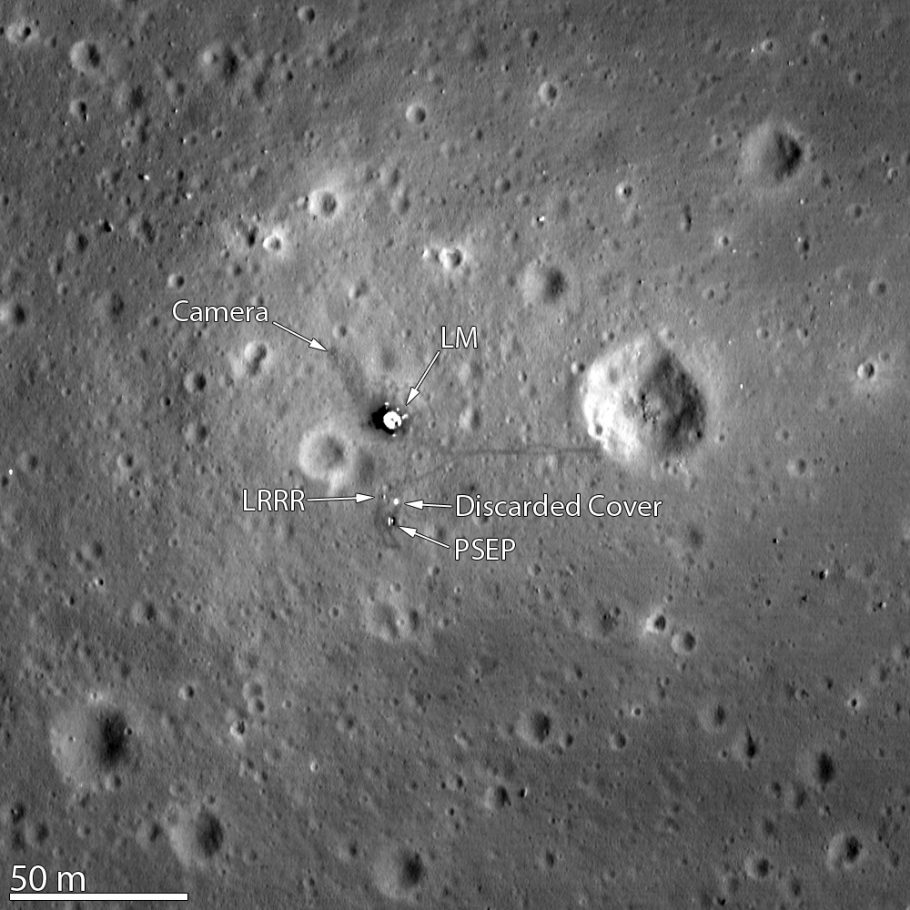
The space suits used on the first three Apollo lunar landings had primary life support of four to six hours, depending on the astronaut’s metabolic rate, and a backup of 30 minutes. In a 2010 letter to NPR, Armstrong explained that the short Apollo 11 moonwalk was due to uncertainty in how long the spacesuits’ cooling water would last and NASA’s requirement to conduct experiments in front of a single fixed camera.
The next two lunar landings involved more ambitious traverses. Apollo 12 in November 1969 included two extra-vehicular activities (EVAs) of just under four hours each, with a maximum distance of 440 m (1,444 ft) from the lander. On February 6, 1971, the second EVA of Apollo 14 extended 1,280 m (4,200 ft) from the lander toward the rim of Cone Crater. This was the greatest distance up to that time, but still less than a mile, with a round trip of four hours and 34 minutes. This EVA was a geological traverse to collect core and grab samples.
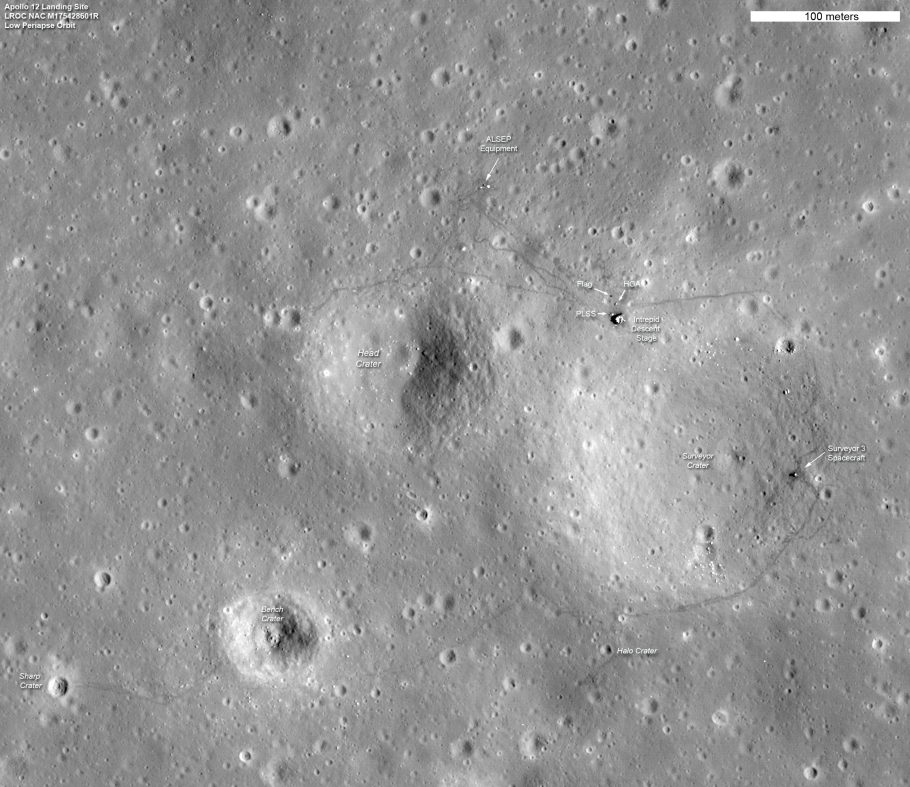
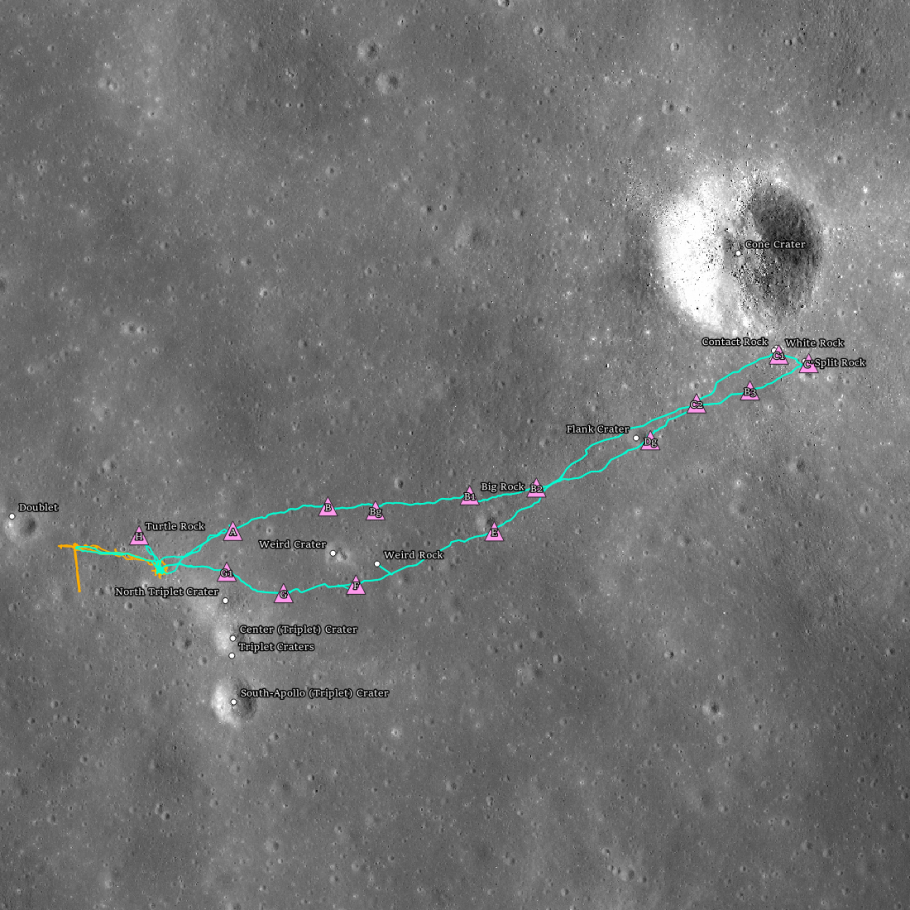
The final three Apollo missions to the Moon covered much more ground, thanks to the Lunar Roving Vehicle, which had a range of 92 km (57 mi). This battery-powered car made its debut on the Apollo 15 mission in July and August, 1971, covering a total of 27.9 km (17.3 mi). Improvements to the spacesuits extended the primary life support to eight hours on Apollo 15 through 17. Even with this added capability, the astronauts would need to walk back to the Lunar Module in the event of an emergency, which limited the distance that they could drive. The Apollo 15 astronauts ranged up to 4.8 km (3 mi) from the lander, and the Apollo 16 traverses reached out 4.5 km (2.8 mi). Apollo 17 set the current record at 7.5 km (4.6 mi), which will stand until astronauts visit the Moon again. In total, the Lunar Roving Vehicles covered 90.2 km (56 mi) over those three missions and allowed sampling of rocks that would have been out of reach to astronauts on foot.
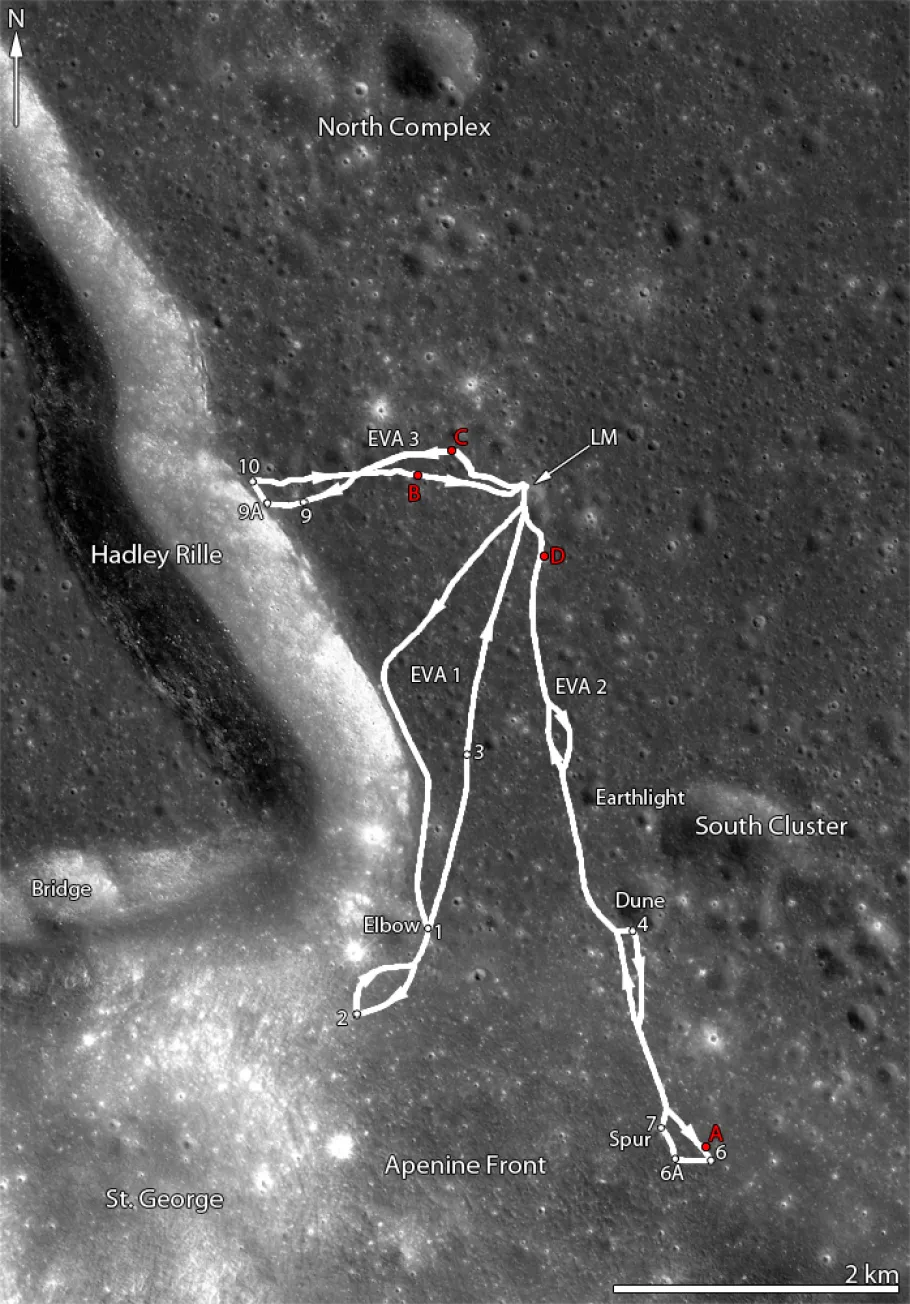
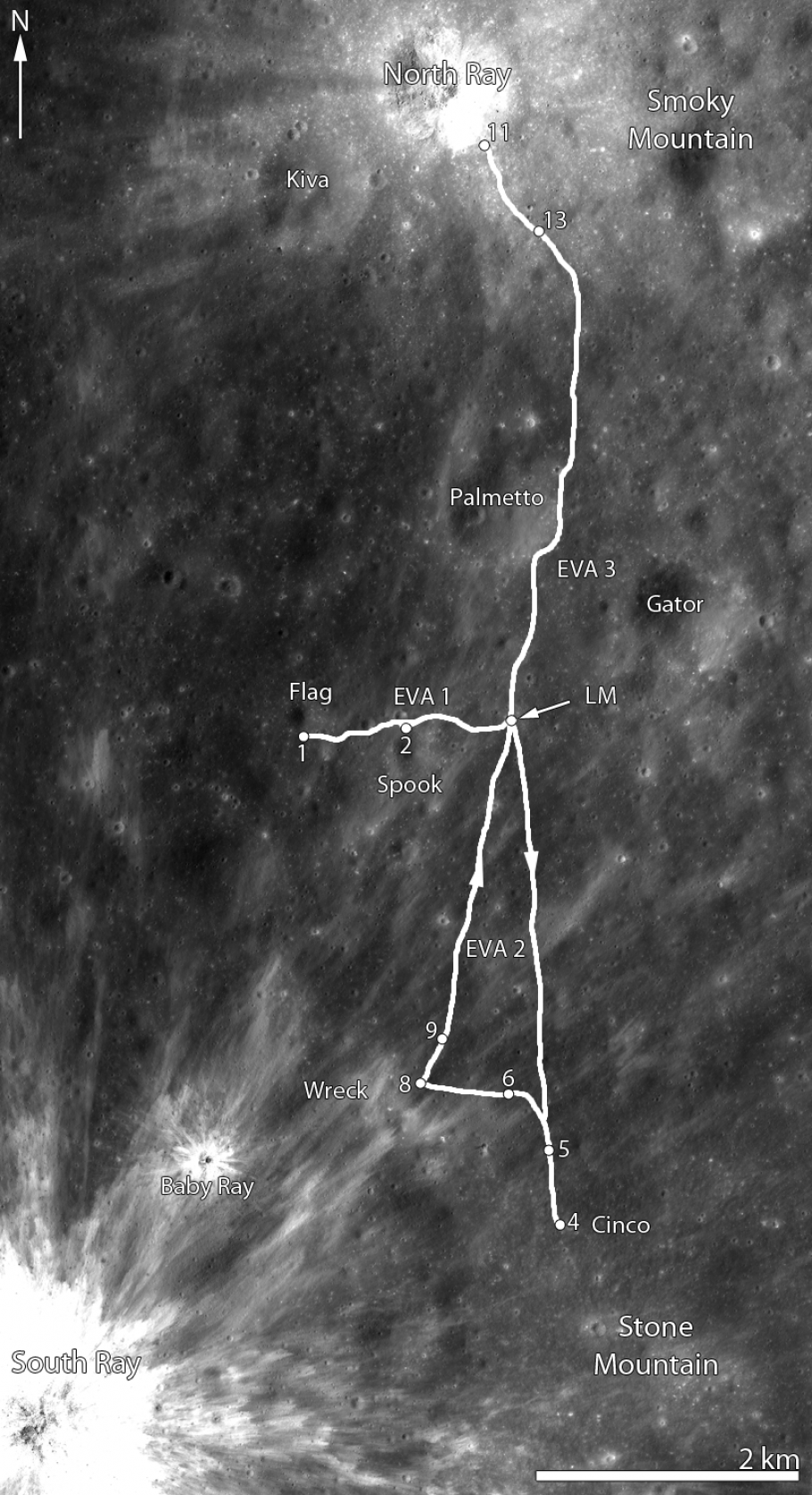
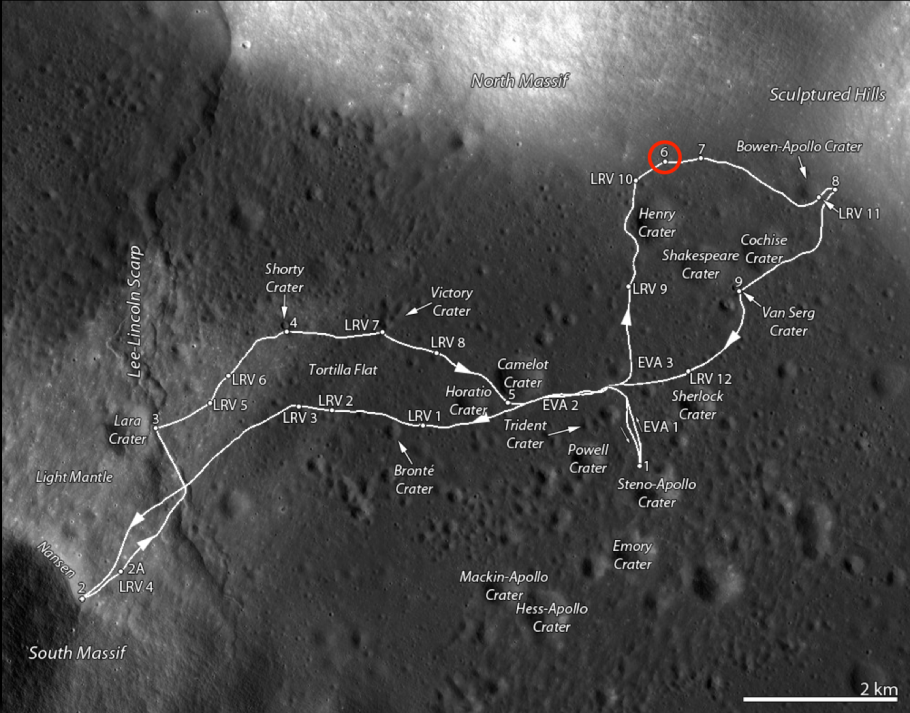
We still have a lot to learn about the Moon. It has a surface area larger than Africa, and people have visited only six landing sites so far. Much of its early history remains poorly understood, particularly the time when the planets and moons of our solar system experienced heavy bombardment by large asteroids and comets before about 3.8 billion years ago. Some of these impact basins are the size of countries. The geologic record of this time is not well preserved on Earth, and the Moon is an accessible time capsule of the early history of our own planet, still waiting for a new generation of astronauts to unlock it.
